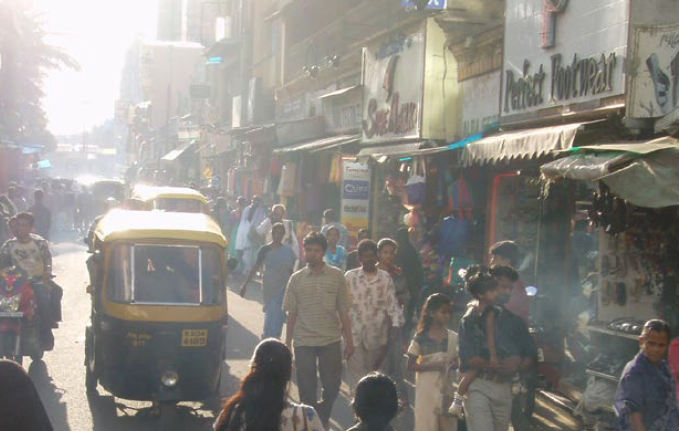The world is already seeing signs that the climate is changing, with Summer 2019 breaking records around the world. India experienced its second-longest heat wave, with temperatures reaching 50.8°C. July 2019 was the hottest month on record globally. Record-breaking warmth is becoming a familiar trend with new markers broken each year for the last several years.
Weather and climate shape India’s economy and society. Temperature and precipitation affect such diverse outcomes as human health, labour productivity, agricultural yields, crime, and conflict. When there is extreme weather, it poses risks to daily life, which are only expected to worsen over the century.
At the root of these climate change impacts is the continued global reliance on fossil fuels. India’s energy use is projected to more than double over the next 20 years, with much of that new use coming from coal. But as one of the world’s largest emitters, India is poised to increasingly take a leadership role in how every country mitigates the causes of climate change. This is why it is critical for the Indian population and policy-makers to understand the benefits of reducing carbon emissions, and the costs to Indian society of not doing so. Without a change to current emissions patterns, India stands to face many impacts of climate change, not least among them being more days of extreme heat.
Extreme heat impacts societies in many ways. One impact that affects both the economy and human well-being is the effect on health, such as through heat stroke and other threats. Heat places the body under great stress, straining the circulatory system and being particularly dangerous to very young children and those over 65. While India is often discussed as one of the countries most vulnerable to future climate change impacts, high temperatures already pose clear and present dangers, as exemplified by the 2015 heat wave that claimed more than 2,500 Indian lives. Reports of people dying from the heat dominate headlines each summer, with even cooler countries like France reporting 1,500 deaths due to the hot temperatures in Summer 2019. India sits at the forefront of this potentially devastating climate impact.
A new study, conducted by the Climate Impact Lab in collaboration with the Tata Centre for Development at UChicago, explores two major questions.
- What are the benefits to India of engaging, and encouraging other countries to engage, in the global mitigation efforts laid out in the 2015 Paris Accord?
- What will the impacts be to the Indian population, and how can Indian policy-makers respond if we continue on a path of high emissions?
Key takeaways from the study include:
- India’s energy use is expected to more than double by 2040, largely driven by fossil fuels.
- With continued high emissions, the average annual temperature in India is projected to increase from about 24°C to about 28°C by the end of the century.
- The average temperature masks differences across regions. For example, Delhi’s current summer average temperature of 31.5°C is projected to increase to over 35°C in 2100.
- Extremely hot days are expected to greatly increase, with days over 35°C increasing from about 5 per year in 2010 to about 42 per year in 2100.
- Punjab is currently the state with the highest average summer temperature. If emissions continue on the current high path, 16 out of 36 states and UTs are projected to be hotter than the current hottest state at the century’s close.
- India is projected to see around an increase of death rates due to climate change equal to about 10% of the current death rate. That is, 60 deaths per 100,000 population by the end of the century under a scenario of continued emissions (RCP 8.5).
- By 2100, around 1.5 million more people are projected to die each year as a result of climate change—at a rate as high as the death rate from all infectious diseases in India today.
- India stands to substantially benefit if countries globally take bold actions to reduce emissions. Shifting to a lower emissions scenario (RCP 4.5) sees the excess death rate drop to about 10 per 100,000, a change of about 2% of current levels.
- Taking measures to adapt would greatly improve the heat-related death rate for people living in India.
Learn more about the study’s design and India’s climate future in our research summary. This study was released during an event at the UChicago Center in Dehli, described in a press release.



